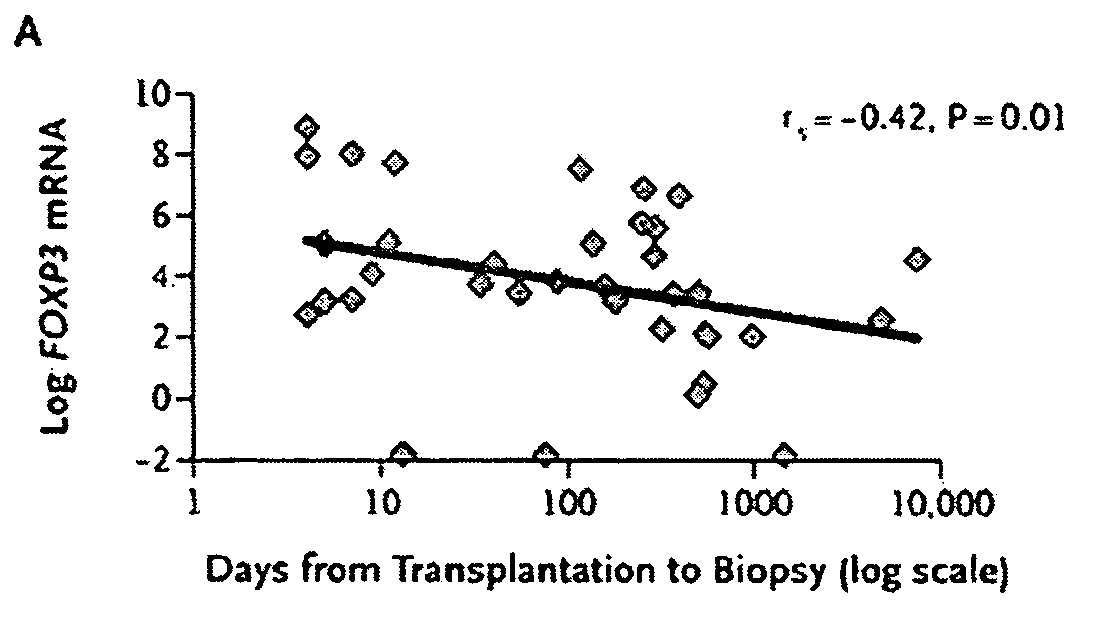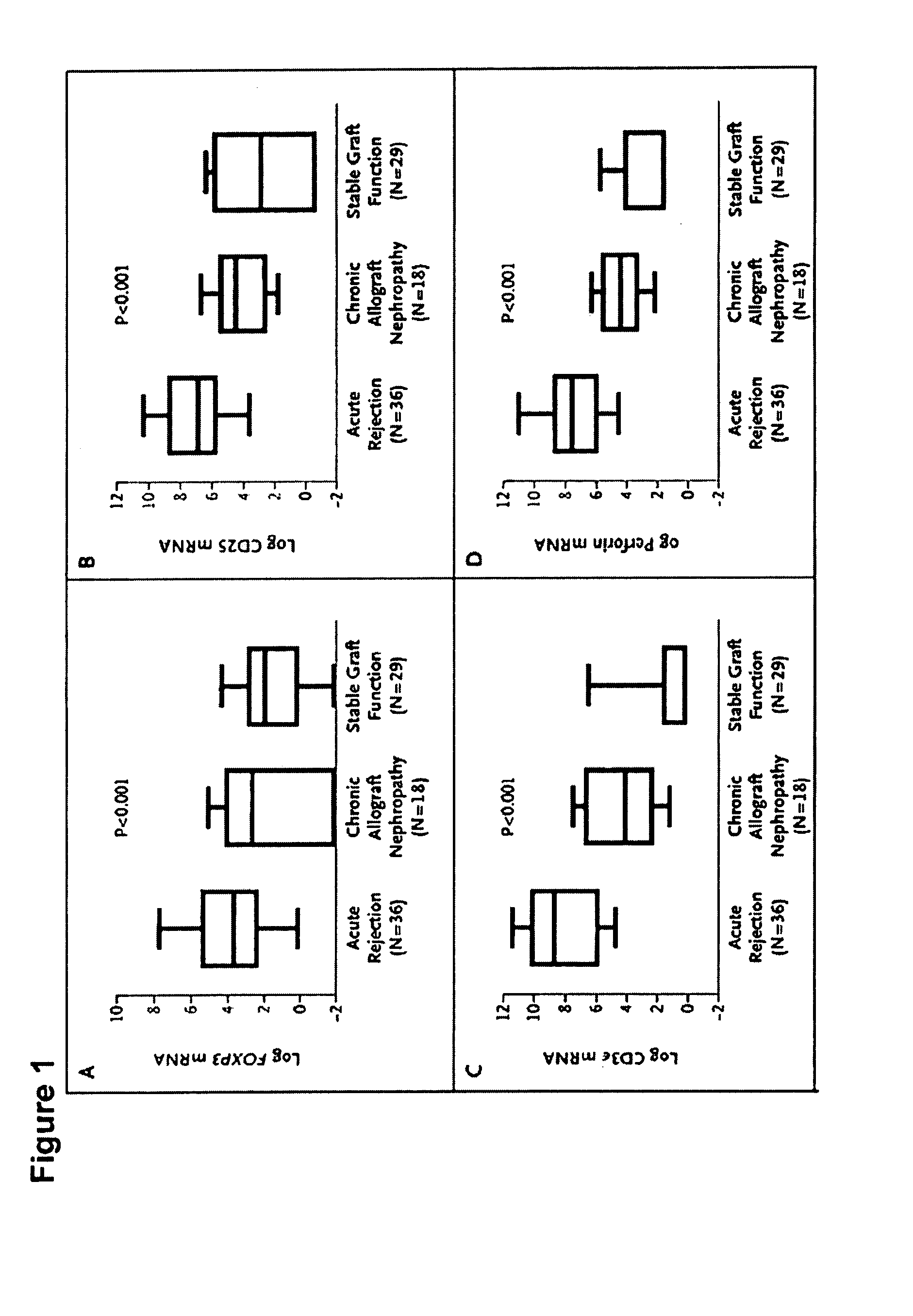Methods of Using FOXP3 Levels to Predict the Outcome of Organs Undergoing Acute Rejection
a technology of foxp3 and organs, applied in the direction of antibody medical ingredients, instruments, drug compositions, etc., can solve the problems of bleeding, arteriovenous fistula, even graft loss, and important risk factor for allograft failure, and achieve the effect of a greater level of foxp3
- Summary
- Abstract
- Description
- Claims
- Application Information
AI Technical Summary
Benefits of technology
Problems solved by technology
Method used
Image
Examples
example 1
Methods
[0061]Study Cohoris. Urine samples from 83 kidney-transplant recipients were examined. In this group were 36 subjects with graft dysfunction (mean [±SD] creatinine level, 3.6±2.4 mg per deciliter [318.2±212.2 pmol per liter]) and biopsy-confirmed acute rejection (mean age, 41±12 years; 15 men and 21 women; 13 white, 12 black, and 11 with other racial or ethnic backgrounds; with 20 living and 16 deceased donors), 29 subjects with stable allograft function (mean creatinine level, 1.4±0.4 mg per deciliter [123.8±35.4 μmol per liter]) and normal allograft biopsy (mean age, 44±14 years; 15 men and 14 women; 12 white, 4 black, and 13 with other racial or ethnic backgrounds; with 26 living and 3 deceased donors), and 18 subjects with allograft dysfunction (mean creatinine level, 3.1±1.6 mg per deciliter [274.0±141.4 μmol per liter]) and biopsies classified as indicating chronic allograft nephropathy (mean age, 52±12 years; 9 men and 9 women; 9 white, 2 black, and 7 with other racial...
example 2
Levels of FOXP3 mRNA in Urinary Cells
[0066]The log-transformed mean (±SE) ratio of FOXP3 mRNA copies to 18S-rRNA copies in urinary cells was 3.8±0.5 in the 36 subjects with acute rejection and was higher than the levels in both the 18 subjects with chronic allograft nephropathy (1.3±0.7) and the 29 subjects with normal biopsy results (1.6±0.4, P1C, and 1D).
example 3
FOXP3 mRNA Levels and Disease Severity
[0067]We observed a significant inverse relationship between the levels of FOXP3 mRNA and serum creatinine measured during an episode of acute rejection (Spearman's correlation coefficient [rs]=−0.38, P=0.02). By contrast, serum creatinine levels were not significantly related to mRNA levels of CD25 (rs=−0.01, P=0.93), CD3ε (rs=−0.11, P=0.54), or perforin (rs=−0.23, P=0.18) in the acute-rejection group. Also, the mean (±SE) serum creatinine level in the 16 subjects with acute rejection of Banff grade IA (moderate tubulitis) did not differ significantly from that of the 20 subjects with grade IB (severe tubulitis) or more (3.3±0.6 mg per deciliter [291.7±53.0 μmol per liter] as compared with 3.8±0.6 mg per deciliter [318.2±53.0 μmol per liter], P=0.57).
[0068]There was no correlation between the levels of FOXP3 mRNA and serum creatinine that were measured in the group with chronic allograft nephropathy (rs=0.02, P=0.93) or the group with normal bi...
PUM
| Property | Measurement | Unit |
|---|---|---|
| Composition | aaaaa | aaaaa |
| Level | aaaaa | aaaaa |
Abstract
Description
Claims
Application Information
 Login to View More
Login to View More - R&D
- Intellectual Property
- Life Sciences
- Materials
- Tech Scout
- Unparalleled Data Quality
- Higher Quality Content
- 60% Fewer Hallucinations
Browse by: Latest US Patents, China's latest patents, Technical Efficacy Thesaurus, Application Domain, Technology Topic, Popular Technical Reports.
© 2025 PatSnap. All rights reserved.Legal|Privacy policy|Modern Slavery Act Transparency Statement|Sitemap|About US| Contact US: help@patsnap.com



